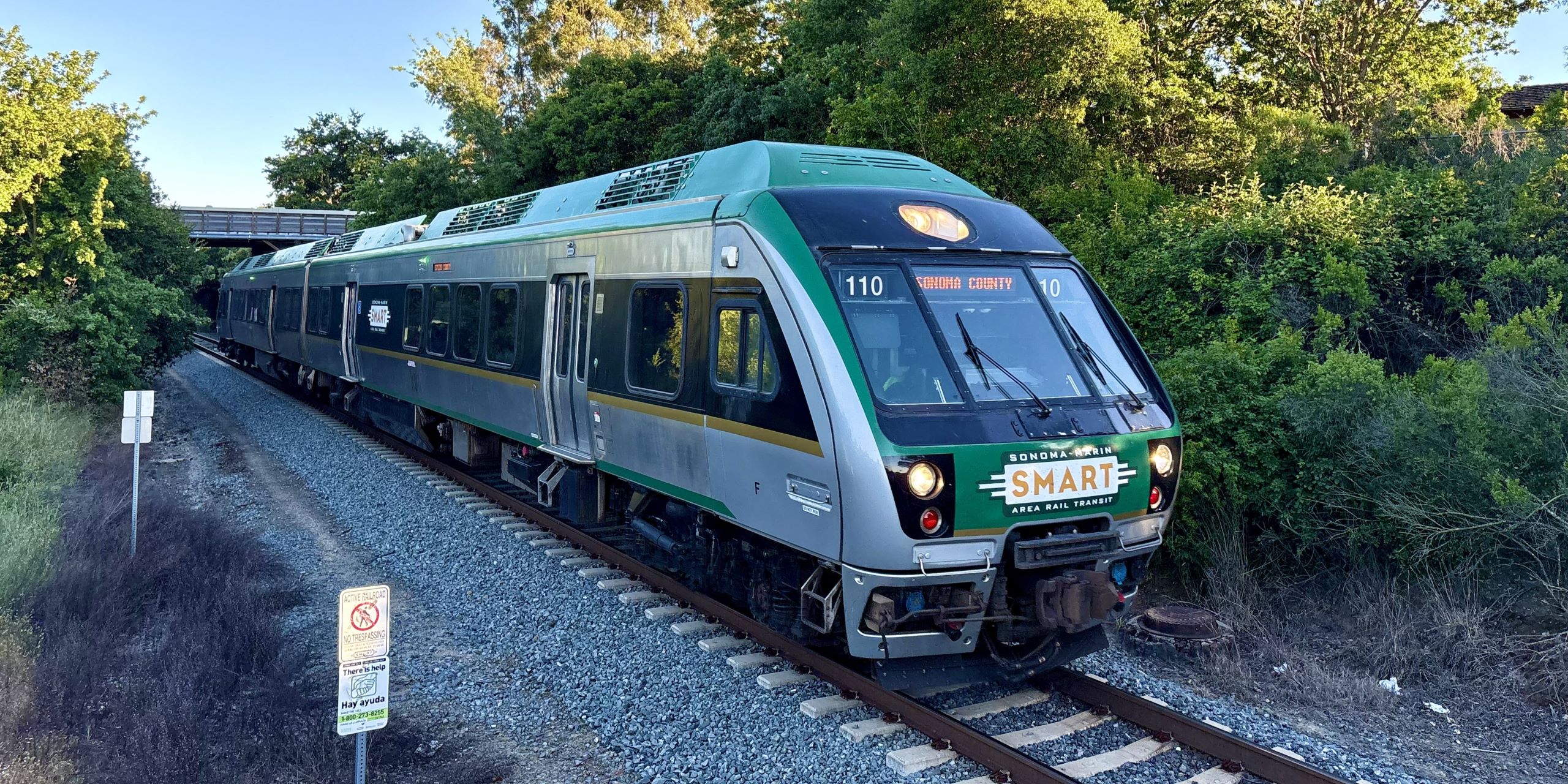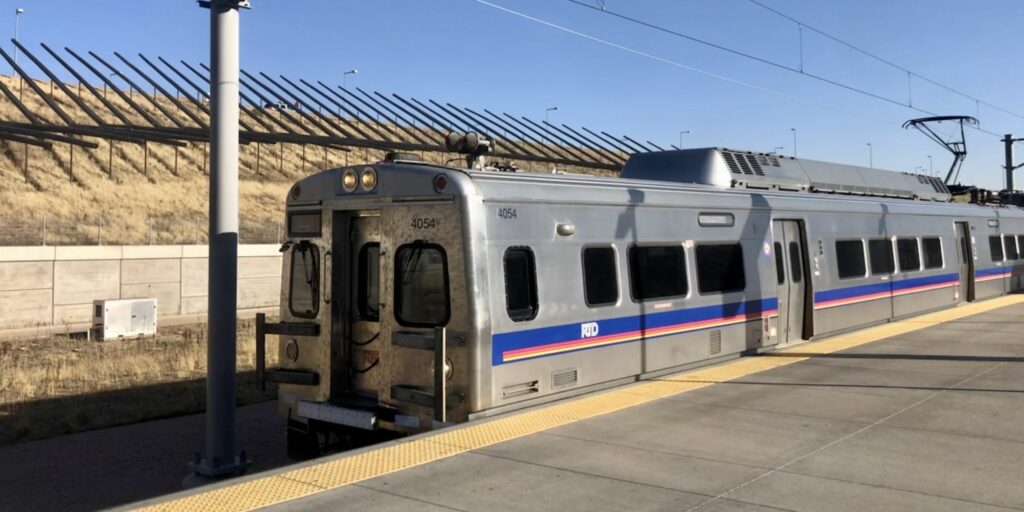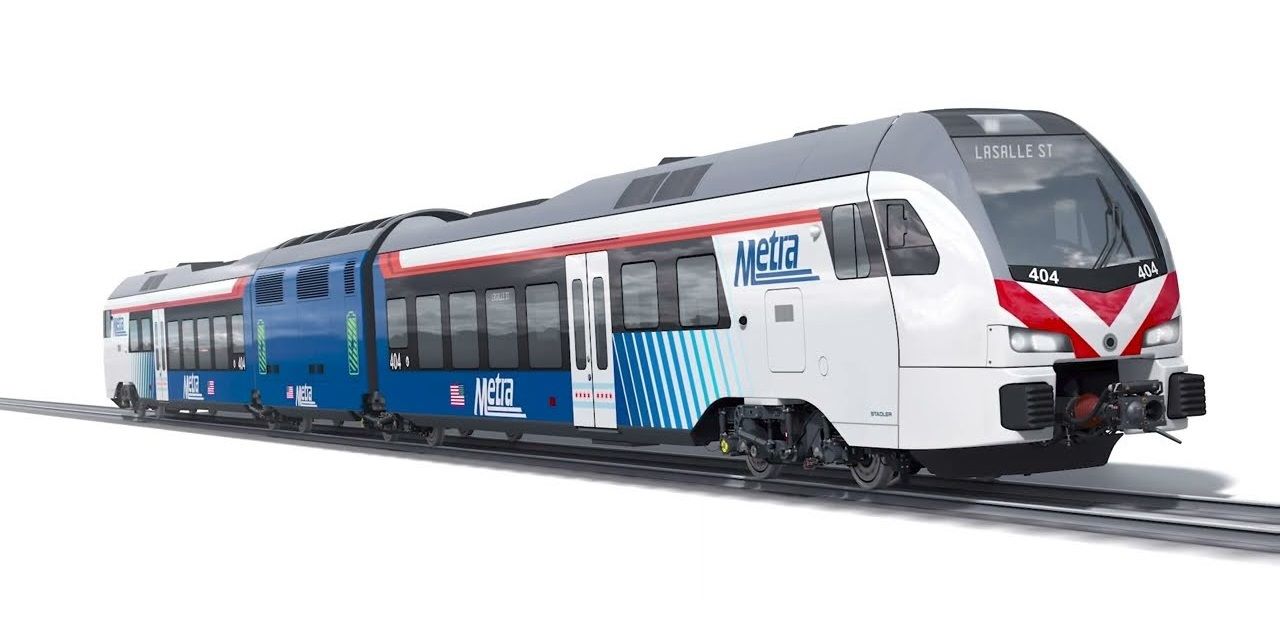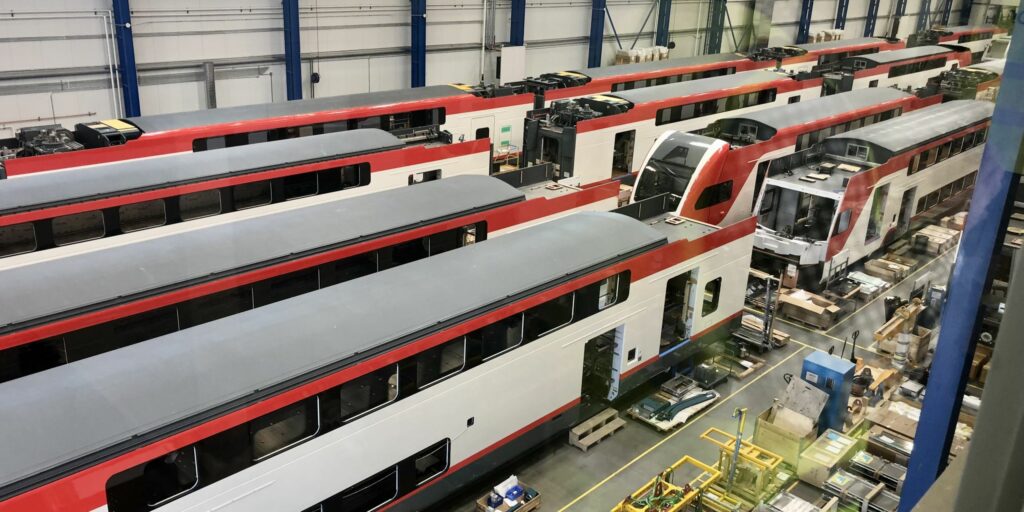GDT > New Train For Colorado > Power Sources
The train’s motive power – how it moves – matters greatly in both emissions and infrastructure compatibility.
Diesel Engines

Diesel is currently the most practical and widely-supported power source, especially on mountainous or long-distance routes that are not electrified. In multiple unit trains, diesel engines can either be located under each car or at a central location in the train for the purpose of generating electricity that is then distributed to traction motors.
Electricity

Electric trains pick up power either via a raised pantograph from overhead wires or collector shoes from powered third rails which is then fed to traction motors. Electric power offers zero local emissions and strong acceleration but requires costly infrastructure installation of overhead catenary systems (OCS) or third rail systems, which are typically restricted on freight corridors.
Batteries

100% battery powered trains are an emerging alternative, but they currently lack the range, reliability, and local charging infrastructure for full statewide deployment in Colorado’s terrain.
Hydrogen Fuel Cells

Hydrogen-electric multiple units (HEMUs) use one or more on-board hydrogen fuel cells to trickle charge batteries which provide power for the train. Because of this, they are quiet and, as the batteries provide the electricity to the motors, can offer performance similar to an electric or solely battery powered train. HEMUs may also be referred to as ZEMUs, a catch-all term for zero-emission multiple units.
Stadler now has one FLIRT HEMU in the U.S. as a demonstrator to prove the technology is feasible for trains. In April 2024, the unit set a Guinness World Record for the longest journey ever completed by a hydrogen train designed for passenger use, running for 1741.7 miles in 46 hours at the FRA Transportation Technology Center in Pueblo, Colorado without refueling or recharging.
The Stadler FLIRT HEMU can currently be found operating on a trial basis for the Arrow rail service in San Bernardino County, California.
Not sure how your train will be powered? No problem…

One manufacturer, Stadler, has designed its ‘FLIRT’ multiple unit train around the possibility that train power sources may change in the future. The basic train consists of 2 or more passenger cars with a power pack in the middle that generates electricity. The passenger cars are carried on ‘Jacobs’ trucks which are placed between them, and some of the trucks have electric motors to move the train.

By having a train that runs on electricity, various sources of power generation can be incorporated in to the power pack, including diesel engines that drive generators or alternators, batteries, hydrogen fuel cells and various ‘hybrid’ combinations. The trains can also be equipped with pantographs for direct power collection from an overhead catenary system (OCS). The big advantage is that if there is a shift in preferred methods for providing energy, the power packs on a train fleet could be converted or replaced without greatly affecting the passenger cars.


